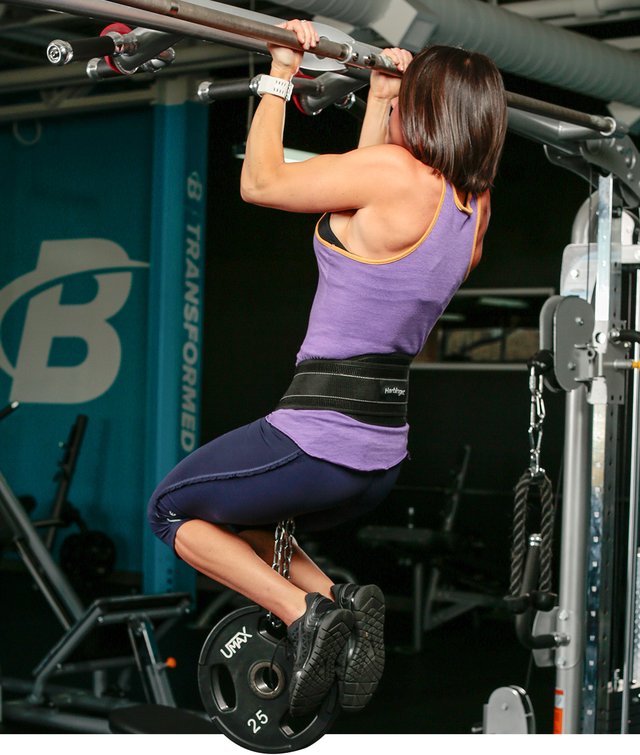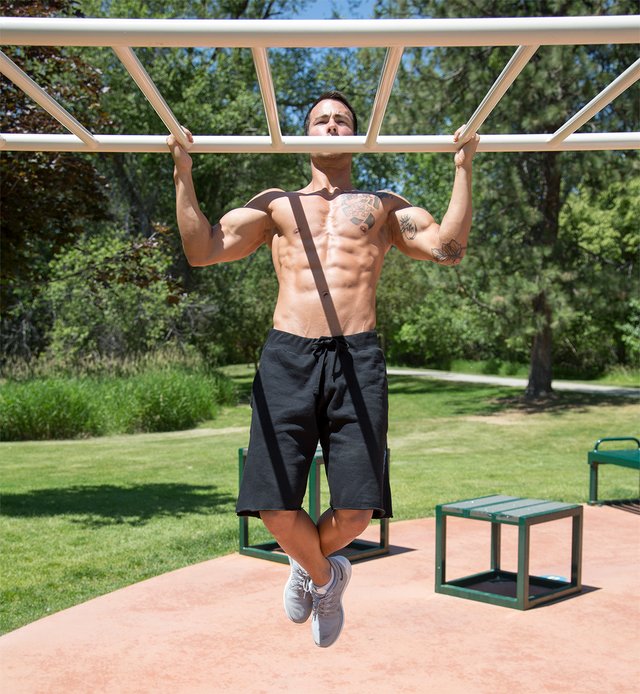Looking to make 2017 your fittest year yet? Before you dive in, be warned that what's ahead of you is as much about mindset as it is sets and reps.
Fortunately, the Cellucor crew of fitness champions is here to share their best tips for 2017. Harvest the wisdom of those who've been where you want to go, and make 2017 your best year yet!
1. Make A Fit Home
Trainer and fitness model Alex Silver-Fagan recommends making your home a space that supports your fitness goals. No, this doesn't mean you have to create an expensive home gym! It could just mean you have everything you need at home to recover from what you do at the gym.
"Create a mobility and recovery station in your living room with some foam rollersand lacrosse balls. Set up a yoga mat next to your bed for morning stretching or to help you wind down before bed. And keep enough healthy snacks on hand," she says.
2. Don't Just Start "Working Out"
So you want to start taking lifting seriously. Any old plan will do, right? Wrong!
Don't just jump onto the first plan you see. "The first part of reaching any goal is coming up with a plan that works for you," says fitness model Craig Capurso. "Spend time either researching existing plans or creating one of your own. Make sure it fits with your life, so that you can actually follow it for more than just a week or two."
3. Set Goals You Can Actually Achieve—And Then Achieve Them!
It's tempting to dream big: big-number weight loss, big lifts, or total life transformations. Celebrity trainer Ron "The Boss" Everline says those definitely aren't out of reach, but they'll only happen if you start with something attainable.
"Give yourself a chance to succeed," he says. "If you focus on a goal that's way out of reach for you, you'll just get frustrated."
You can always create a new, more difficult goal once you've reached your existing one. Build confidence first, then build results on top of it.
4. Get Tiers Of Goals On Paper
"I have new clients set goals for the next 30 days, three months, and six months," says personal trainer Jen Jewell. "Instead of creating one big goal, we create smaller monthly accomplishments that add up to big results."
Having this hard copy in your life can do more for you than you might imagine! It gives you something to aim for, and you can re-evaluate it as necessary.
5. Don't Get Stuck In The Appearance Trap
Having appearance-related goals is normal and human. Don't deny these goals if they're really what drives you! But don't let them totally define your training, because while losing 10 pounds, dropping a dress size, or gain an inch on your biceps is gratifying, it's not enough to motivate you to keep coming back for months or years on end.
"These kinds of goals can make you feel frustrated when you don't see changes from one workout to the next," says Jewell. "When I flipped my approach and decided to set performance-based goals, I could track my progress and know I was getting closer to my goals from week to week—even if I couldn't always see it."
6. Protect Your Workouts
In 2016, did you plan a lot of workouts, only to skip them when life got in the way? Don't let that happen to you in 2017.
"Treat your workouts and meal-prep time like business meetings," says Silver-Fagan. "Put them on your calendar so you're less likely to cancel. If you don't protect these times, no one will. You need to look out for yourself here."
7. Recruit An Ally
Fitness can seem like a solitary pursuit, but it doesn't have to be. If you're excited about your goals, having someone to share that excitement—and that process—with is going to make everything work better.
"Find a fitness friend who has the same goals as you," says CrossFit athlete Eric Botsford. "Your goals don't necessarily have to be exactly the same, but you want to find someone who can—and will—push you and keep you accountable."
And don't forget that this is a two-way street. You'll be helping that person reach their goals, too.
8. Try A Group Fitness Class
If you're having trouble sticking with a program that's just you versus the iron or the clock, maybe the problem is your program, not you. A more social fitness experience might be just the thing.
The answer: Try out a new fitness class! It can be a great change of pace and keep you more invested in living the fitness lifestyle. It doesn't have to be an all-or-nothing pursuit, either. You can do Zumba one day, squats and deads the next, then yoga, then hit your upper body. Mix and match to feed your body and your soul!
9. Get Critical About Nutrition
So many people focus on the exercise end of fitness, but diet plays a critical role too. "When fat loss is the goal, more protein and less carbs are the answer for most people," says fitness model Jordan Edwards. "But the balance is going to be different for everyone. You just need to take the time to find yours."
10. Make Each Choice A Victory
It can be easy to take too big a picture of training. If you don't work out nearly every day, you might feel tempted to beat yourself up. But that's the wrong approach, according to Botsford.
"Search for the positive in everything you do," he says. "Count each training session as a victory and each healthy meal as a positive health choice."
11. Try A New Level Of Intensity
If you haven't tried high-intensity interval training (HIIT) yet, now's the time to start. "Add a HIIT session to your workout routine every other day, or even just twice a week," suggests Edwards. "These high-intensity sessions will kick-start your ability to shed the extra fat you've been hanging on to for months or even years."
Not only will you burn calories during your workout, you'll also ramp up your metabolic rate. This means you'll keep burning fat and calories at an accelerated rate for hours after the session.
12. Add Some Fun Into Your Workout Routine
It's great to get down to business when you step into the gym. But don't forget to build some fun into your fitness, too. Sometimes that means looking outside the gym.
"Look for fun movements and activities to do, so you don't get bored," Everline advises. Every once in a while, do an exercise that you really enjoy doing, even if it doesn't lead to the most powerful results. It can be riding a bike, going for a meandering hike, or even flying a kite.
Do those sound like the kinds of activities you liked when you were a young kid? It's no coincidence. Being fit is like giving yourself a whole new childhood, if you're up for it. And if your fitness is fun, it'll have far more of a chance to last.
13. Invest In Your New Passion
No, fitness doesn't have to be expensive. But a little fresh equipment can make you feel more comfortable and confident during your workouts—and maybe even help prevent injuries.
Building a bigger bench or military press? Investing in a good pair of wrist wraps can give you the support you'll need. Squatting more? Definitely consider some dedicated raised-heel squat shoes. If you're training for a running event, nothing gets you going like a new pair of running shoes to cushion your joints and prevent pain.
14. Make Small But Incremental Lifestyle Changes
When you make the decision to change your life, it can be tempting to look at what you're doing now—and what everyone around you is doing—with disdain. All of a sudden, everything you or your friend eats seems disastrous or downright evil. Resist this urge to judge, and try not to turn the life you know on its head right away.
"Don't make big sweeping changes to your diet or life," says Botsford. "Make big changes by taking small steps over time. People fail to make change when they go at it full speed but then can't keep up the pace." Slow and steady will win this race.
15. Post Your Goals Everywhere
"Write your goals down, and put them everywhere: on the bathroom mirror, on the fridge, on your phone," suggests Everline. "The more often you see your goals every day, the more you'll remember why you're working so hard."
16. Be Consistent But Forgiving
Yes, change would happen quickly if you followed a very restrictive diet, worked out seven days a week, and stopped hanging out with friends and family to lift at the gym.
"It's great to be incredibly motivated," Edwards says, "But what happens when you just run out of energy, or you can't face having to go to the gym after a few glasses of wine the night before? Say you miss a Friday gym session, and that turns into a weekend off. What then?"
Falling off a harsh plan, even for a day, can make many of us people feel like we've failed completely. "In the long run, it's much better to maintain a balanced, realistic approach," she says. "Remind yourself that 'all or nothing' isn't going to work in the long term."
Being consistent is what will yield the best results, not being perfect.
17. Be Fearless In The Face Of Change
Yes, building a fitter life will feel like a huge battle at times. No, you will not always progress in a straight line. Yes, you will be tired, hungry, and discouraged sometimes. No, it will not always make sense to those around you, or maybe even to you yourself.
But keep going.
It's not about becoming someone new. It's about becoming the ultimate version of yourself. Just keep pressing forward, and one day, you'll look back and be amazed at how far you've climbed.





/cdn0.vox-cdn.com/uploads/chorus_asset/file/7687011/Screen_Shot_2016_12_21_at_5.23.19_PM.png)
/cdn0.vox-cdn.com/uploads/chorus_asset/file/7687097/Screen_Shot_2016_12_21_at_5.38.18_PM.png)
/cdn0.vox-cdn.com/uploads/chorus_asset/file/7687113/Screen_Shot_2016_12_21_at_5.40.27_PM.png)
/cdn0.vox-cdn.com/uploads/chorus_asset/file/7686415/Batman_Virus.jpg)
/cdn0.vox-cdn.com/uploads/chorus_asset/file/7689817/3044999.jpg)
/cdn0.vox-cdn.com/uploads/chorus_asset/file/7495173/GettyImages_170614987.jpg)